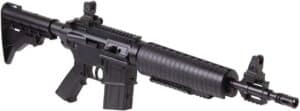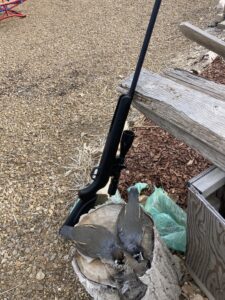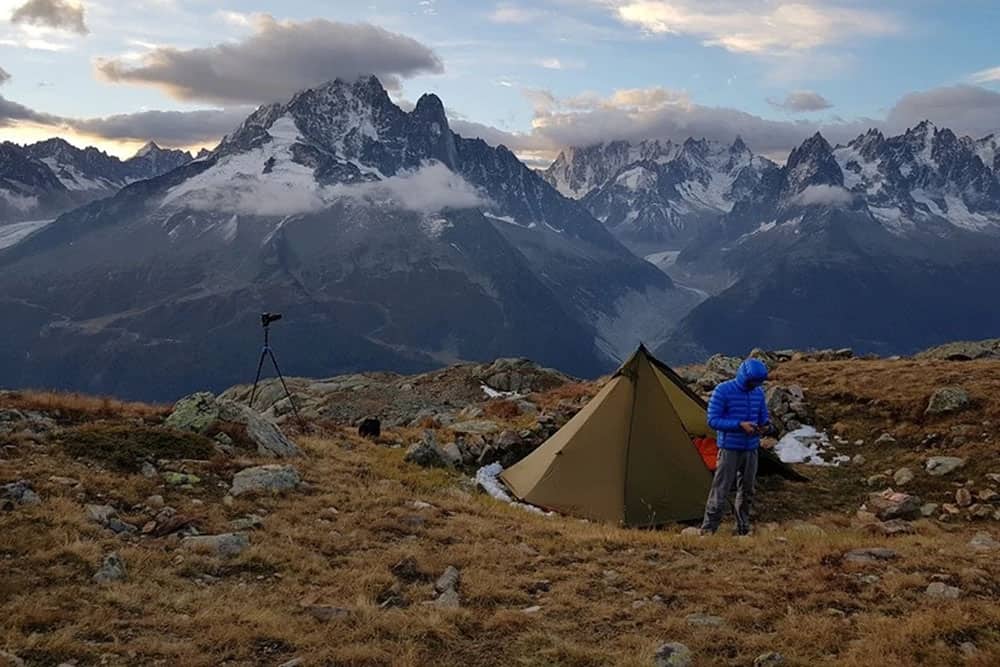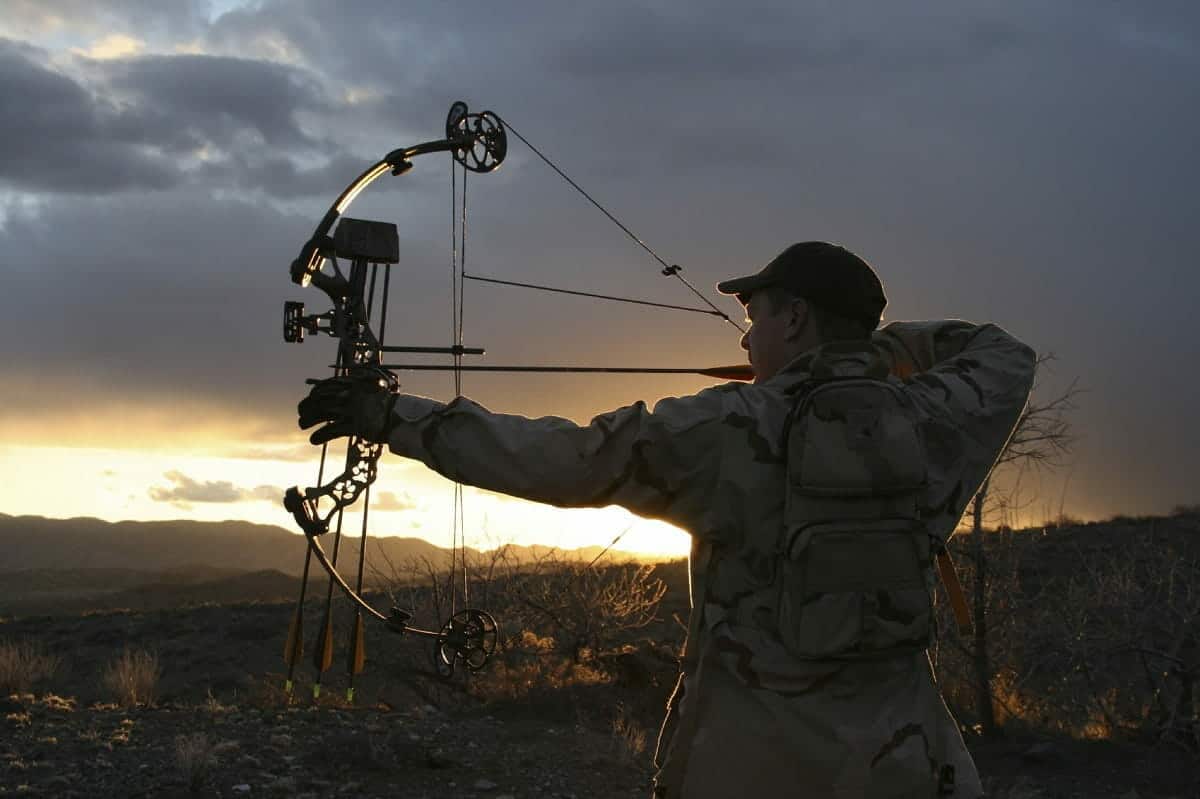Gone are the days when air rifles are consistently inferior to traditional firearms. Modern technological advances have turned air rifles into useful tools for hunting small game. Air rifles on the market today are incredibly accurate and easy to handle. They also have the benefit of needing less expensive ammunition and that ammunition doesn’t go bad like primers, powders, or cases will.
In this article, we’re going to rank the Best Air Rifles so that you can find a safe gun for hunting squirrels, birds, rodents, and other small game. Before you move on to purchasing your own air rifle, be sure to read through our comprehensive Buyer’s Guide and Frequently Asked Questions sections to learn as much as possible about air guns and how to make the right purchase for your needs.
1. Gamo Big Cat .177-Caliber Air Rifle
The newest addition to the Big Cat family is the most powerful Big Cat every made. It boasts Gamo’s new Smooth Action Trigger, which maximizes pinpoint accuracy. It also comes with an all-weather synthetic stock that offers rubberized grips and a Shock Wave Absorber that reduces recoil shock by up to 74 percent.
The Gamo Big Cat 1400 achieves 1400 feet per second shot velocities with PBA Platinum ammunition, which makes it a very powerful air rifle (2). This single shot air gun boasts a 33-millimeter Cylinder power plant and a break barrel single cocking system. It features a manual trigger safety, 4×32 scope with rings, and twin cheek pads for comfortable, ambidextrous shooting. This pellet gun is perfect for small game hunting.
2. Benjamin Marauder Synthetic Stock .22-Caliber Pellet Air Rifle
This air rifle is designed for the hunter that wants a lightweight, adaptable firearm. Its new synthetic stock makes it weigh in lighter, but also maintains optimal balance for field carry. It also comes with an ambidextrous raised comb so that it can adapt to firing from either shoulder as circumstances and shooters dictate.
The Benjamin Marauder boasts a choked and internally shrouded barrel that guarantees both precision and ultra-quiet operation. It’s arguably the most accurate and quietest rifle in its class and it features a two-stage-adjustable, match-grade trigger system that functions to make every shot smooth and steady. Its 8-round magazine also allows for fast follow-up shots.
3. Benjamin Trail NP XL 1100 Break Barrel .22-Caliber Air Rifle
If you’re searching for an air rifle that’s fast, quiet, and easy to use, give this one from Benjamin Trail a good look. It boasts the Nitro Piston powered break barrel, which produces 70% less noise than comparable spring-powered air guns. It also offers less recoil and a smooth cocking mechanism that makes a successful day of hunting pain-free.
The Benjamin Trail NP XL 1100 includes a 3-9x40mm CenterPoint precision scope, which features an adjustable objective and range-estimating reticle. It also comes with a bull barrel, picatinny mounting rail system, installed sling mounts, and a ventilated rubber recoil pad. With 24 feet pounds of muzzle energy and shot velocities up to 1500 fps, this rifle means game over for small game.
4. Crosman M4-177 Pneumatic Pump .177-Caliber Air Rifle
The Crosman M4-177 is a perfect firearm for anyone that wants the look and feel of an M4, but with more ammunition flexibility. This air rifle can shoot BBs or pellets and its multi-pump design means you can pump it up to ten times to achieve higher shot velocities. It also allows you to pump less if you’re going for easy, all-day shooting.
This air rifle is pump action, so it doesn’t require a battery or carbon dioxide for functionality. It boasts a 350 round BB reservoir and also comes with a pellet magazine. This rifle features an aperture rear sight that’s adjustable for windage and a post front sight that’s adjustable for elevation. Both sights are removable and also boasts an adjustable scoping stock, sling loops, and a manual safety.
5. Ruger Targis Hunter Max .22
Perfect for shooting small game in your backyard or out in the field, this pellet gun offers a TNT gas piston power plant and Nucleus rail system. The power plant and rail system work together to provide an excellent shooting experience designed to satisfy new air rifle hunters and experienced handlers equally.
The Ruger Targis Hunter Max .22 boasts SilenceAir technology and an ambidextrous automatic safety for versatile shooting. It also offers a rifled barrel and rubber recoil pad. This rifle comes with a 3-9×32 AO airgun specific scope that’s easy to mount and get on target. If you prefer open sights, it also has fiber optic sights ready to go. These technologies make this a great air rifle.
6. Hatsan Model 95 Combo Rifle
This pellet rifle is designed for the hunter that prioritizes the look of a rifle just as much as its performance. This rifle’s ambidextrous Turkish walnut stock gives is a beautiful, authentic feel that’s sure to make a good first impression. But it also reinforces that impression by delivering a maximum shot velocity of 1000 fps.
The Hatsan Model 95 Combo rifle is a single-shot, break barrel rifle that relies on a spring-powered piston. It boasts a rifled steel barrel and a Quattro two-stage match trigger that’s adjustable for trigger-pull weight, first stage, second stage, and length of travel. It also features a fixed TruGlo fiber optic front sight and fully adjustable TruGlo fiber optic rear sight.
7. Crosman Rogue SBD .177-Caliber Air Rifle
The Crosman Rogue SBD air rifle is designed for small game hunters that want to stay as quiet and stealthy as possible. Its’ new silencing barrel device (SBD) makes it capable of dispatching paper targets and small game three times quieter than other break barrels in its class. It also offers smoother cocking, no spring torque, smoother shooting, and no spring fatigue even if left cocked for hours.
This air rifle boasts a Nitro 2 gas piston that functions 15 percent faster than standard gas pistons. It also comes with an all-weather synthetic stock, front and rear sights, and a rifled steel barrel.
It features an adjustable, two-stage, clean break trigger and requires less cocking force than similar models. Finally, this air rifle functions perfectly in cold weather and lasts longer than rifles that rely on a metal spring to deliver the action. This pellet gun is a very capable air rifle.
8. Air Arms S200 FT Air Rifle
Those looking for a low-cost introduction to PCP air rifle shooting (3) should consider the Air Arms S200 FT pellet rifle because of its relatively small size. Despite that size, this gun delivers well when hunting small game at short and medium distances. It includes a quick-release connector for the air reservoir and you’ll be able to shoot between 50 and 60 times on a single air charger.
This pellet gun boasts a maximum shot velocity of 800 fps and a max fill pressure of 2,700 pounds per square inch (PSI). It offers a rifled barrel style and relies on a pre-charged pneumatic mechanism to deliver the action. This air gun features an 11-millimeter dovetail rail, a 19.09-inch barrel length, and weighs in at 6.17 pounds.
So now that you’ve seen the top ten air rifles on the market today, it’s time to figure out how to narrow down your options a bit further. This Buyer’s Guide will focus on several characteristics of air guns that you should be familiar with before settling on one.
9. Remington Tyrant XGP .177
The Remington Tyrant XGP .177 is perfect for small game hunters that need precision accuracy. This break barrel air rifle also offers an ambidextrous synthetic stock, but this one is outfit with a Monte Carlo cheek piece and a comfortable rubberized recoil pad to reduce wear and tear on your cheek and shoulder.
This air rifle comes with a 4×32 scope to help you aim more quickly and fire off more accurate shots. It’s a single shot rifle with a two-stage trigger and a fixed muzzle-suppressing device. With .177-caliber lead pellets, this air rifle is capable of shooting at 1000 feet per second (fps). It also weighs just 6.6 pounds and features a barrel length of 16.5 inches.
10. RWS Model 34 .22-Caliber Pellet Air Rifle
This .22-caliber air gun can top out above the 800 fps mark. It’s designed for the hunter that wants a rifle that can deliver on performance without offering too many features that just end up getting in the way. It offers polished blued metalwork, full-sized hardwood stock with an ambidextrous design, and a two-stage adjustable trigger system.
The RWS Model 34 is also a great choice for hunters looking for a magnum air rifle that won’t break the bank. Tis air rifle weighs in at just 7.5 pounds and offers a barrel length of 19 inches. It comes with a 4×32 scope to help ensure shot accuracy. Recommended pellets for this air rifle include RWS’ Meisterkugeln, Super Point, Super H-Point, and Superdome (1).
Power Plant
The first major characteristic that categorically separates air guns from one another is the power plant. This is the mechanism responsible for the rifle’s operation. There are four major types of power plants that we’ll cover here: spring piston, carbon dioxide, pneumatic, and pre-charged pneumatic.
Spring Piston
The spring piston is the most common method of operation for high-powered air rifles. The operation is guaranteed through a spring system that also utilizes an air piston to propel pellets or BBs. This method of operation requires that the user manually retract the spring using some form of leverage.
For your money, air guns powered by a spring piston system are usually the most accurate and affordable choice. They rely on simple and reliable technology so they are also less likely to jam or malfunction. Their only limitations come in the forms of the caliber of ammunition they are compatible with and the fact that they’re really useful for small game only.
Carbon Dioxide
Air rifles that rely on carbon dioxide use pre-filled cartridges that usually contain 12 grams of compressed air in a metallic cylinder. This cylinder is attached to the rifle and is the only power source for semi-automatic air rifles. As far as replacing empty cartridges goes, they are usually very easy to find and affordable to acquire (4).
Air rifles that utilize carbon dioxide cartridges don’t require regular pumping action, which makes operation simpler. However, they do tend to suffer from inconsistencies related to how outside temperatures can decrease the pressure inside the cartridges.
These inconsistencies sometimes compromise the rifle’s velocity and accuracy. For this reason, rifles that rely on CO2 are best used for plinking and recreational shooting.
Pneumatic
Pneumatics air rifles also rely on compressed air to propel pellets or BBs, but they rely on pump action to create that pressurized air. There are several different types of pneumatic air rifles, including single-stroke and multi-pump.
Single-stroke air rifles function when the user consistently pumps the rifle before every shot. This system guarantees greater consistency in terms of accuracy, which makes rifles that use it a great choice for target shooting. However, the extra movement, noise, and time that they require make them a less suitable choice for hunting.
Multi-pump air rifles are a favorite of those looking for convenience above all else. These rifles feature an air reservoir that utilizes a built-in air pump. When you need to fill the reservoir with compressed air, you can pump it multiple times to pressurize for multiple shots.
Pre-Charged Pneumatic
Pre-charged pneumatic (PCP air rifle) air rifles are also sometimes simply referred to as “PCP air rifle. They still rely on a controlled amount of compressed air, but an air compressor or hand pump pre-charges their reservoirs in these rifles. Depending on the caliber of ammunition you’re using, you’ll be able to shoot these rifles from ten to a few dozen times on a single charge.
Pellet guns that use this method of operation can be very powerful. Some are capable of firing large ammunition and taking down medium game. The major downside of pre-charged pneumatic air rifles is their price. But they also require the additional investment into what can be an expensive air filling system.
Mechanism
While most of the best air rifles on the market rely on a break barrel mechanism, there are several other types that you should be aware of. These types include under lever, side lever, and semi-automatic.
Break Barrel
Break barrel air rifles feature a barrel that hinges downward. When it does so, this cocks the spring and opens the barrel. Once it’s open, this is when you load a pellet into the barrel. Rifles with this mechanism are simple to use and are often incredible lightweight.
Their simplicity also makes them much more reliable. Break barrel rifles are also very easy to deconstruct and upgrade. If you do purchase a break barrel air rifle, iron sights and usually the most compatible optics option in terms of maintaining accuracy.
Under Lever
Under lever pellet guns have the cocking lever directly underneath the barrel. When operating, you’ll grab the lever and pull toward the butt of the rifle to cock the spring and open the breech for loading. Air rifles that use this mechanism don’t offer any torque when firing the weapon because of this lever design. This design is also ambidextrous, which makes this type of air rifle highly adaptable.
Side Lever
Pellet guns with a side lever mechanism are operated by grabbing a lever that’s mounted on the side and pulling it backward (towards the rear of the rifle). This action cocks the piston and opens the breech for you to load the pellet.
Although similar to under lever rifles, these tend to be more durable and less sensitive to rough handling. That said, they aren’t ambidextrous so they can be difficult for left-handed shooters.
Semi-Automatic
Semi-automatic air rifles don’t require any manual cocking after the first round. Ammunition is fed from a magazine and fires one round per pull of the trigger. Referring to the power plants we went over above, most semi-automatic air rifles rely on either a carbon dioxide or PCP power plant.
Scopes and Sights
If you’re going to be using your air rifle for any medium distance shooting, you’ll probably want to look into the scope and/or sight options to improve your accuracy. If you’ll mainly be doing backyard shooting, you might not need a scope or sight. That said, let’s discuss scopes, scope mounts, and sights in a bit more detail.
If you want to add a scope to your air rifle, the first thing to consider is the exact type of scope your preferred rifle is compatible with. Certain rifles only accept limited mounts and some can’t accept mounts at all.
When it comes to scopes with air rifles, it’s vital that the scope is rated for use with air rifles. If not, they usually won’t last long because of the way that many air rifles produce reverse recoil.
When deciding on the proper scope mount for your air rifle, the tube millimeter measurement is the one to pay attention to. This measurement will tell you if a certain scope mount will fit. Tubes and optics come in a variety of sizes, so making sure they are compatible is critical.
Lastly, some air rifles actually function better with iron sights than a scope. If you mainly intend to use your air rifle for short range shooting, iron sights are usually going to be sufficient. But if you want to maximize accuracy for medium or long range shooting, peep or aperture sights are the ticket.
Air rifle use and operation takes some time to learn, especially for new shooters. In this section, we’ll answer some of the most common concerns about air rifles so that you feel confident moving forward with your buying process, as well as the use and maintenance of an air rifle.
Are fixed barrel rifles more accurate than break barrel rifles?
The break barrel action means that the rifle’s barrel moves slightly with each shot. This means it isn’t always in the exact same place, which can indeed affect accuracy.
However, most of the modern break barrels are so well manufactured that the average shooter won’t recognize the accuracy difference between a break barrel and a fixed barrel. For experienced shooters, however, a fixed barrel is the way to go.
Which caliber is best?
This largely depends on the type of shooting you prefer. Target shooters and plinkers tend to opt for .177 caliber. If you’ll mainly be using your air rifle for pest control or small game hunting, then you’ll probably want .20 or .22 caliber. And those that wish to seek medium game with an air rifle, there are now models capable of firing .25 caliber and 9-millimeter ammunition.
How do I make sure I get the most accurate shot possible with an air rifle?
There are potentially many answers to this question. For starters, accuracy depends on your shooting technique and how you hold the rifle. The only way to improve in these areas is with practice. But as far as the rifle itself, there are also several other factors that can cause an inaccurate shot. These include incorrect pellet type, a dirty barrel, loose sights or scope, loose barrel pivot bolt, and loose stock screws.
Why do air rifles require different scopes that firearm rifles?
Unlike most firearm rifles, air rifles that rely on a spring piston mechanism generate heavy recoil and vibration in both the forward and rearward directions. Because of this, scopes manufactured for air rifles are made to withstand the heavy bi-directional recoil and vibration.
Air rifle scopes also typically come with parallax adjustment that allows closer focus. Most will focus down to 10 yards because air rifles are usually used for short and medium range shooting.
If you’re looking for a non-toy grade gun that’s easy to handle and great for ridding your yard of those small pests, or small game hunting, an air rifle is a great choice. We hope that you enjoyed this review of the best air rifles of 2023 and we wish you the best of luck selecting the right air rifle for you!













